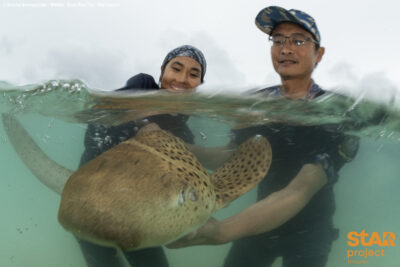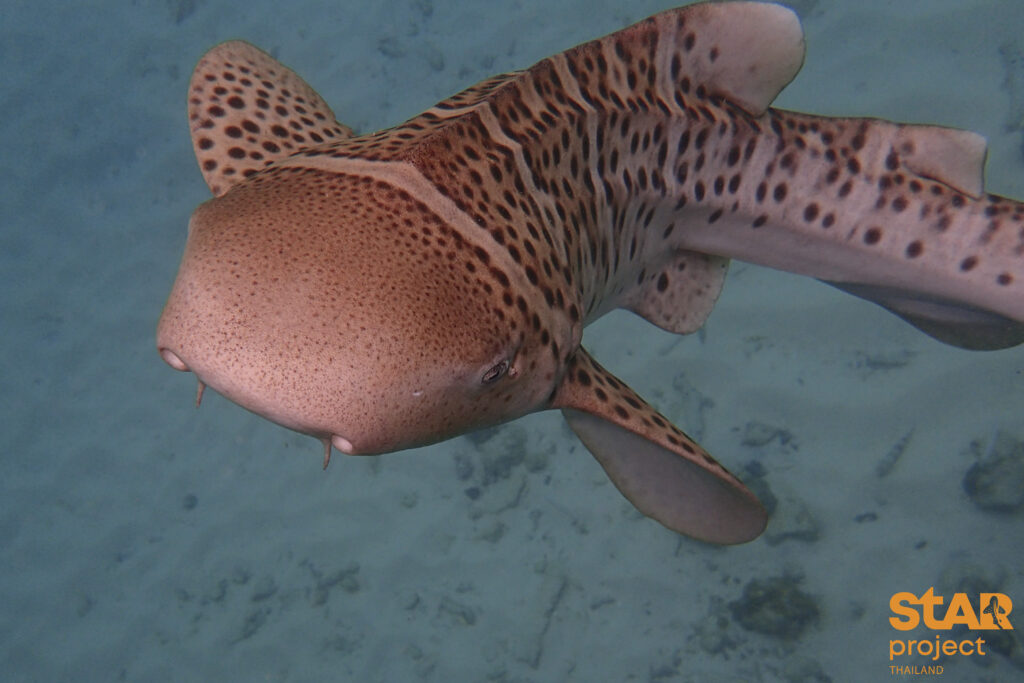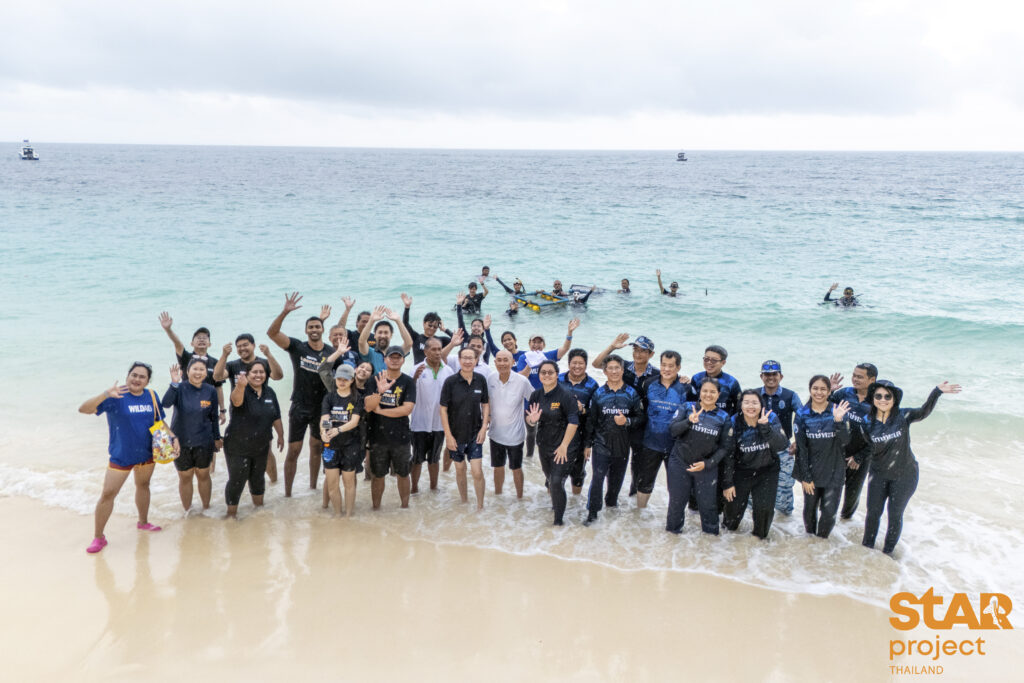
Off the coast of Phuket Island, Thailand, three juvenile Indo-Pacific leopard sharks were released to the wild on September 9, 2025. This release marks a historic milestone for shark conservation and a key step for the “StAR (Stegostoma tigrinum Augmentation and Recovery) Project Thailand”, a first-of-its-kind rewilding effort that aims to rebuild wild populations of this endangered species.
Indo-Pacific leopard sharks are easily recognized by their distinctive spotted pattern and long, graceful tails. Found in shallow tropical waters, they spend much of their time resting on sandy bottoms near coral reefs. They help regulate populations of invertebrates and small fish, maintaining the ecological balance that supports reef health and biodiversity. Yet habitat degradation, overfishing, and accidental capture in fishing gear have caused steep population declines in recent decades.
The three released sharks — Maya, Similan, and Ginger — were bred by an aquarist team from Aquaria Phuket, a private aquarium located in Phuket Province. Once old enough, they were moved to a custom-built sea pen on Maiton Island, where aquarists from the “StAR Project Thailand” carefully helped them adapt to natural marine conditions and trained them to forage for food independently.
Prior to release, veterinarians from the Department of Marine and Coastal Resources (DMCR) and Ocean Park Hong Kong examined the sharks and fitted them with acoustic tracking tags. The team of experts then deemed the trio, each around one and a half years old, healthy and mature enough to explore, hunt, and thrive on their own in the wild.
In collaboration with the DMCR, the Department of National Parks, Wildlife and Plant Conservation (DNP), and the StAR Project Thailand team, 20 underwater acoustic receivers were deployed across Phang Nga Bay — an important habitat for the species and an area identified through citizen science as a hotspot for leopard shark activity. The receiver network includes famous dive sites such as Hin Musang (Shark Point), Hin Bida, Bida Nai, Koh Phi Phi Leh, and Koh Racha Yai. When a tagged shark like Maya, Similan, or Ginger swims within 500 meters of a receiver, the tag’s ID is automatically recorded in the receiver’s data log.


The receivers are safe, non-hazardous, and essential for marine research. Divers are encouraged to report any loose or damaged receivers and to continue submitting photos and videos of leopard shark sightings in Thai waters through the “Spot the Leopard Shark – Thailand” platform. These contributions play a vital role in helping scientists carry out long-term monitoring of the released sharks and population trends.
A Population Viability Analysis (PVA) is currently underway to assess the probability of species extinction in Thailand and to inform a comprehensive conservation approach, including the number of leopard sharks needed for reintroduction and outlining post-release monitoring measures.
Over the next few months, the team will prepare for another leopard shark release and will begin retrieving data from the deployed receivers, in close collaboration with government partners, to track the movements of the released sharks.
The “StAR Project Thailand”, originally initiated by ReShark, was officially launched in May this year through a multi-sector collaboration involving key Thai government agencies, the private sector, and non-profit organizations. The project’s partners include the DMCR, Department of National Parks, DNP, the Department of Fisheries (DoF), Aquaria Phuket, Maiton Resort, WildAid, Ocean Blue Tree, and Thai Sharks and Rays.
Each shark released represents a return of balance, biodiversity, and hope for the future of Thailand’s reefs.


Stay in touch and get the latest WildAid updates.
SIGN UP